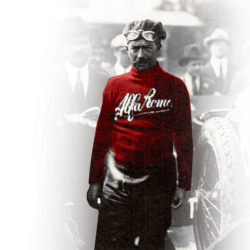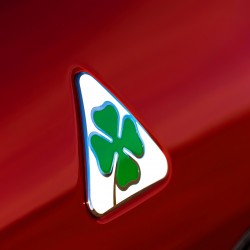Astute viewers who watched the reveal of the new Alfa Romeo Giulia Quadrifoglio at the LA Auto Show may have noticed the brand’s iconic cloverleaf on the side of the car.
The green four-leaf clover, set inside a triangle, has a deep history of triumph and tragedy for Alfa Romeo.

Ugo Sivocci
It dates back to the 1920s after Italian race car driver Ugo Sivocci joined the Alfa Romeo team with legendary drivers Enzo Ferrari and Antonio Ascari.
Sivocci was a talented driver, but could never take the top spot in a race and was a perennial second-place finisher.
In 1924, in an effort to banish this bad luck, he painted a four-leaf clover encased in a square box on the side of his car.

1923 Targa Florio
“In his first race, he won,” said Reid Bigland, head of the Alfa Romeo brand in North America, at the reveal of the Giulia.
But just a few weeks after winning the Targa Florio race, Sivocci was testing the new Alfa Romeo P1 on the Manza circuit and did not have time to paint his lucky cloverleaf on the car before he took to the track.
“Tragically, he crashed and lost his life and a legend was born,” Bigland said.
From that point forward, all of Alfa’s race cars, and high performance cars, have featured the “Quadrifoglio Verde,” but with one small change.
All future clovers were encased in a triangle, with the missing point symbolizing the loss of Ugo Sivocci.

Quadrifoglio logo
This has included the P2, Alfetta 159, Giulia TI Super, Giulia Sprint GTA and the 8C Competizione – all of which have all carried the Quadrifoglio badge.
“(Alfa Romeo) is a brand that has an incredibly rich history filled with legendary racing triumphs and tragedies, colorful personalities and notable superstitions,” Bigland said.




